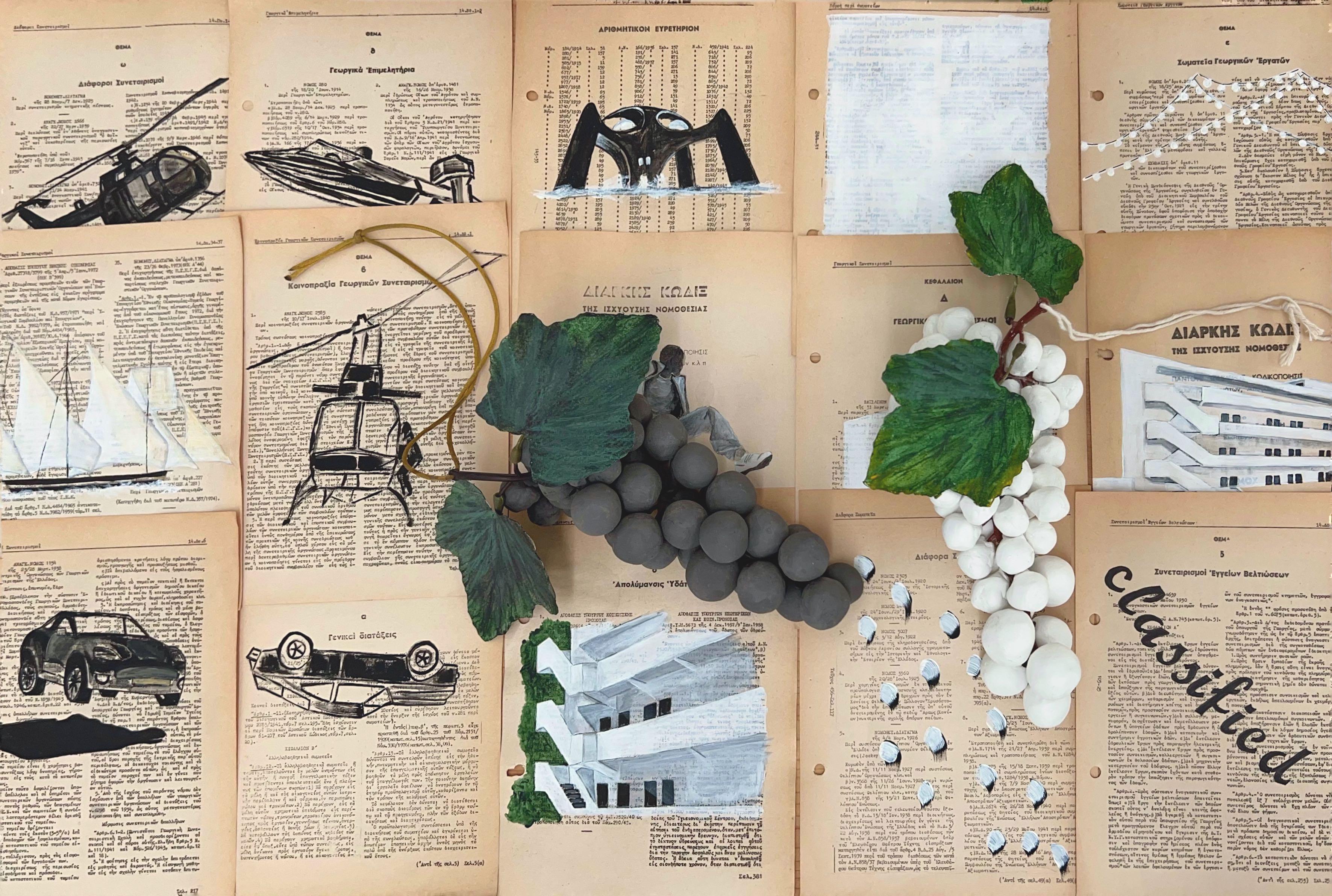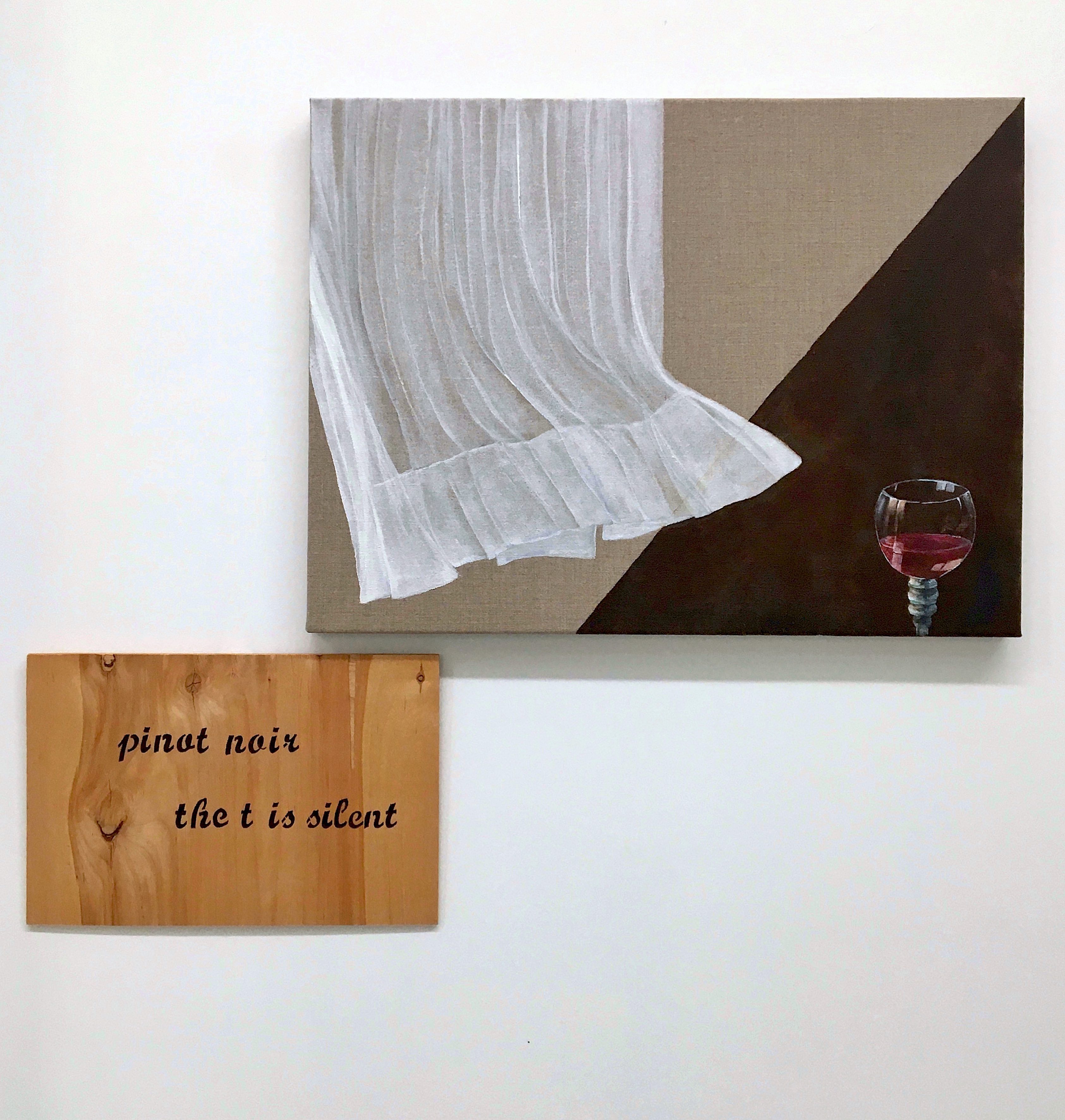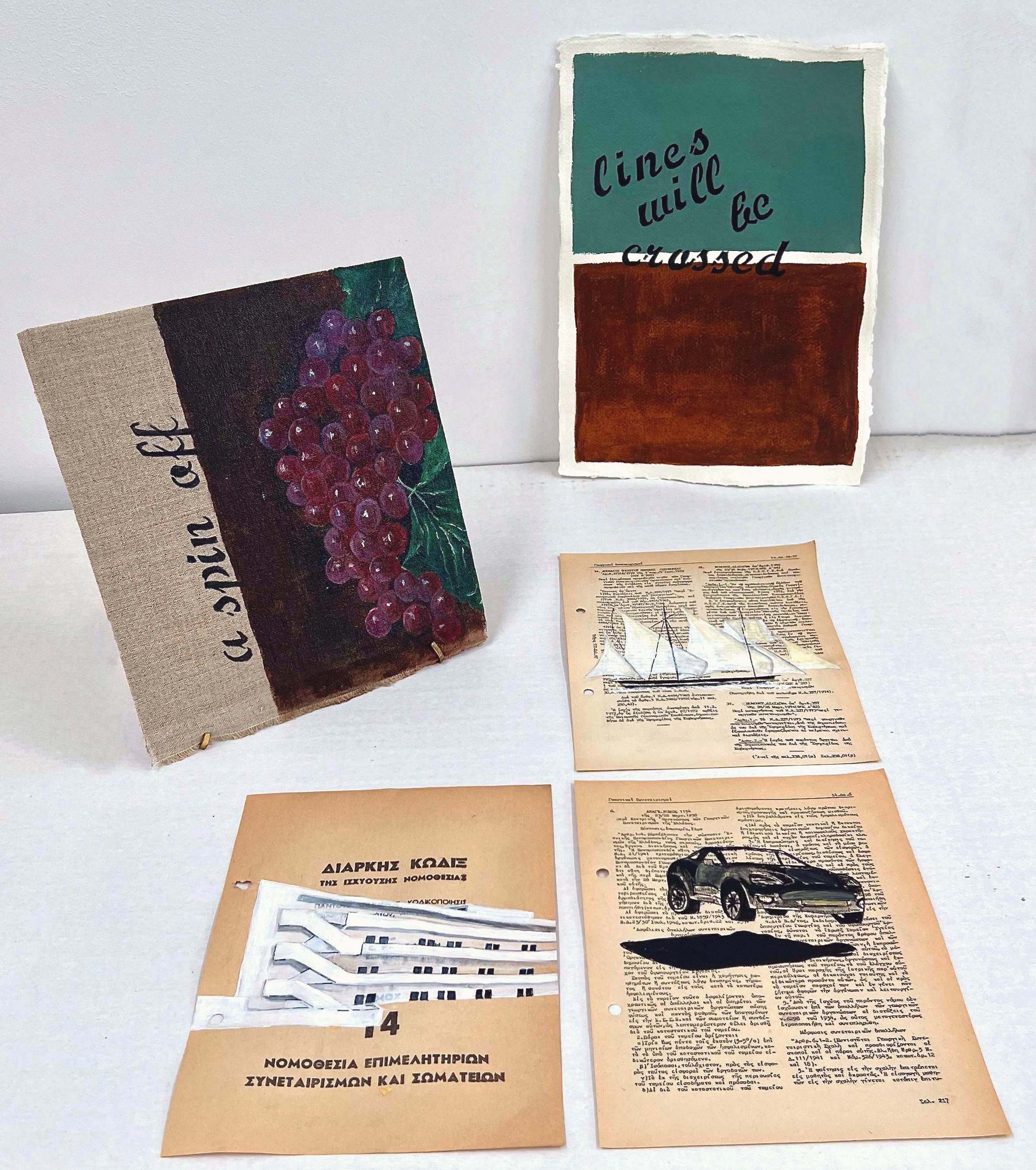DIMITRA VAMIALI
PINOT NOIR
(the T is silent)
On Tuesday, June 10th, from 19:00 to 22:00, Ileana Tounta Contemporary Art Center presents Dimitra Vamiali’s third solo show.
The exhibition will be on view until July 31st 2025.
The story could go like this:
“Another afternoon had settled outside, finding him seated at his desk in a dimly lit room in the bustling city center. He could not bring himself to write; his mind wandered as he gazed out the window. As far as his eyes could go, he would see nothing but rows of bright-coloured grapes shimmering under the warm sun, leading towards the vast land and the serene expanse of sea beyond. The turmoil in his head could now seize. After years filled with suspense, intrigue and danger, it was finally time to rest and enjoy some quite time. Well, in fact he couldn’t, but the alter ego in his writings could! Yes, the idea had formed in his mind and now the moment was right for a well-deserved glass of Pinot Noir. And don’ t forget, the t is silent!″
A story within another story, placed in a deceptive setting; that’s what the latest exhibition by Dimitra Vamiali with the enigmatic title Pinot Noir is. With a series of works that act as plot devices of a non-linear narrative with two perspectives, the artist constructs a mise-en-scène – a staged environment – through which she “composes” a noir tale. Based on a plethora of references and findings from literature, film, art history and even reality, it suggests a story about a writer writing a hypothetical scenario, in which a former spy retreats to an imaginary vineyard to isolate himself and change his life. The choice of the hero-spy is not at all coincidental in this manipulative era of constant surveillance and collection of personal information through the internet and technology.
The artist’s aim for this imaginary invention is to serve as an allegory for the human condition, the contradictions that characterize it, the deeper questions that torment us and the big decisions that each of us is called upon to make. Those decisions that lead – intentionally or unintentionally – to the real shifts towards the fulfillment of a person’s deepest needs at every moment of his or her life. So on one hand, the artist raises concerns that, altogether, are not at all lighthearted, but at the same time she presents them in this micro-universe in a familiar and poetic way, integrating contemporary popular culture and a disguised sarcastic humour. Thus, each aspect of the exhibition comments on the numerous issues that concern us, but also contributes to the narrative of this fictional noir tale.
As in her previous works, the environment she creates is composed of different artistic means, each of which contributes to the rendering of an ambiguous, paradoxical setting, both visually and conceptually. The exterior and interior spaces alternate; there are paintings depicting grapes in an idyllic vineyard or a mysterious figure in the darkness, but also installations that form intimate spaces using old handmade papers with carefully selected phrases – familiar references or invented narratives open to interpretation.
Through this expressive dualism, a powerful web of multiple meanings is rendered accordingly; the personal entangled with the historical, the pragmatic-logical and introverted sense of the author as opposed to the irrational, uncontrollable nature of the god Dionysus – the god of wine and rebirth – as represented through the spy’s desire for privacy and carefree nature; two things that he believes the vineyards and nature can offer. And ultimately the bridging of these two – if such a thing is ever possible – through creative expression.
Vamiali seems to visualize excerpts from a made-up literary text that blurs the lines between reality and fiction, constructions of the imagination and the path of art itself. She orchestrates a polymorphic exhibition that implements the ongoing artistic exploration of narrative modes, through constructed allegories and trajectories, creating a realm of infinite possibilities with fluctuating emotions. Just as Albert Camus’s anti-heroes waver between the rational and the absurd and find themselves constantly in interplay of contradictory states, between bliss and misery, action and inaction, rationality and absurdity.
Galini Lazani
May 2025





